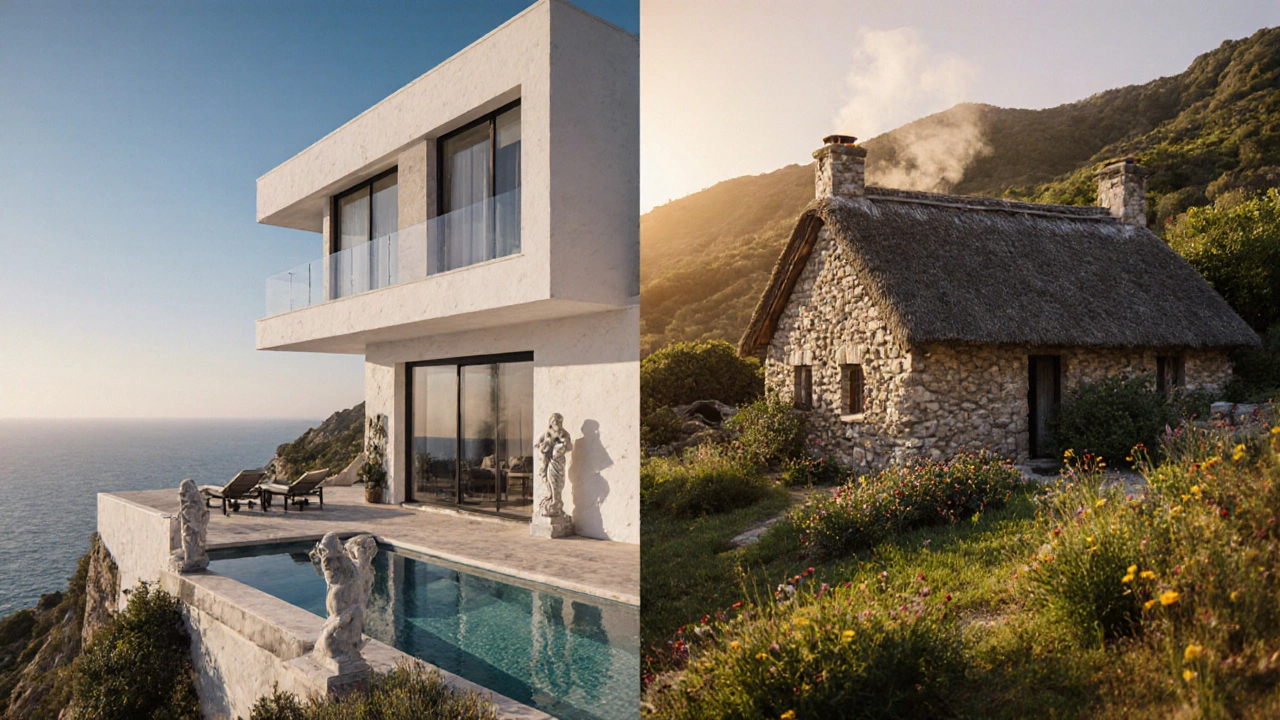Cottage Definition – Understanding What a Cottage Is
When you hear the term cottage definition, a short, cozy dwelling typically found in rural or semi‑rural settings. Also known as cottage, it often features a steep roof, a fireplace, and a garden. A glamping cottage, a luxury‑styled campsite that blends camping comforts with cottage aesthetics is a modern spin that adds upscale amenities. Comparing a cottage vs small house, differences in footprint, layout, and lifestyle focus helps you spot the right fit. Finally, cottage rental income, profits earned by letting out a cottage to holidaymakers shows why many owners turn their homes into money‑makers.
Core Features That Make a Cottage a Cottage
At its heart, a cottage packs comfort into a small footprint. Typical attributes include a low‑rise structure, a pitched roof, and a front garden that invites birds. Inside, you’ll find a compact kitchen, a living space centered around a fireplace or wood‑burner, and one or two bedrooms. These features create a snug vibe that many city‑dwelling visitors crave. The cottage definition also embraces locality – most cottages sit near farmland, coastlines, or historic villages, giving guests easy access to nature trails or local pubs. Because space is limited, clever storage solutions and multi‑functional furniture become essential, turning every square foot into usable comfort.
Another key attribute is seasonality. While some cottages are year‑round homes, many operate as holiday rentals that peak in summer or winter, depending on the region. This seasonal demand influences pricing, amenities, and even the type of heating or insulation used. For owners, understanding the ebb and flow of tourists can help set rates that balance occupancy with profitability.
In recent years, the traditional idea of a cottage has expanded. The rise of glamping cottage, luxury camping units that retain cottage charm while adding high‑end facilities like en‑suite bathrooms and Wi‑Fi shows how travelers want both nature and comfort. These hybrids often sit in national parks or coastal dunes, offering a premium experience that commands higher nightly rates. The glamping trend also brings new materials – think timber frames, solar panels, and eco‑friendly insulation – blending sustainability with style.
When you compare a cottage vs small house, the main distinctions lie in size, design intent, and lifestyle implications, the picture sharpens. A small house might be an urban infill or a starter home, built for long‑term family living with standard amenities. A cottage, however, is usually purpose‑built for leisure, with decorative details like exposed beams, stone walls, or thatched roofs. This difference affects everything from planning permission to interior décor choices. Knowing which path fits your vision helps avoid costly remodels later on.
Beyond aesthetics, many owners ask, "Can I make money from my cottage?" The answer hinges on two factors: market demand and effective management. cottage rental income, revenue generated by short‑term bookings, can be a reliable side‑hustle if you price correctly and market to the right audience. Tools like online travel agencies, local tourism boards, and social media ads boost visibility. Moreover, offering unique perks – such as farm‑to‑table breakfasts, guided hikes, or pet‑friendly rooms – can justify higher rates and attract repeat guests.
Last‑minute booking platforms add another layer of opportunity. Services that specialize in last‑minute cottage getaways let owners fill gaps in their calendar quickly, often at a discount that still beats an empty house. While the margin may be slimmer, the increased occupancy can improve cash flow during off‑peak months. Sellers who keep flexible cancellation policies and clear communication tend to earn better reviews, which in turn drive future bookings.
Putting all these pieces together, the cottage landscape is richer than a simple definition might suggest. From the classic thatched roof to the sleek glamping unit, each variant brings its own set of attributes, pricing structures, and guest expectations. Understanding the nuances – whether you’re comparing a cottage to a small house or calculating potential rental income – equips you to make informed decisions, whether you’re buying, renting, or turning a property into a profitable holiday spot.
Below you’ll find a curated collection of articles that dive deeper into each of these topics. They cover pricing guides for glamping cottages, step‑by‑step income tips, and even how a cottage stacks up against other accommodation types. Explore the list to get the practical insights you need to choose, manage, or profit from a cottage today.
Villa vs Cottage: Key Differences Explained
Explore the key differences between villas and cottages, covering size, price, amenities, and lifestyle to help you choose the right property.
- Oct, 13 2025
- 0 Comments
